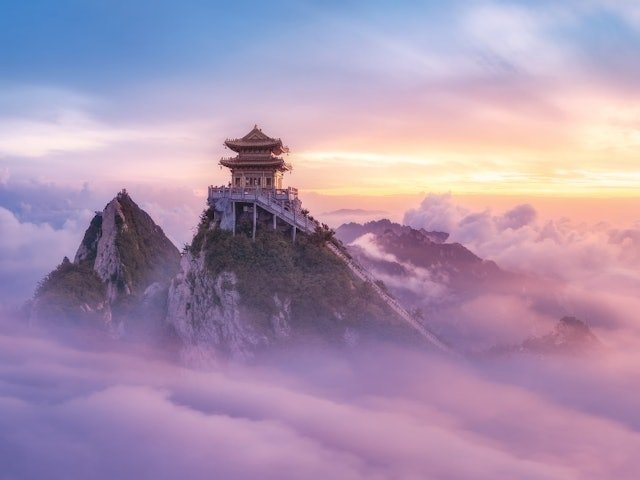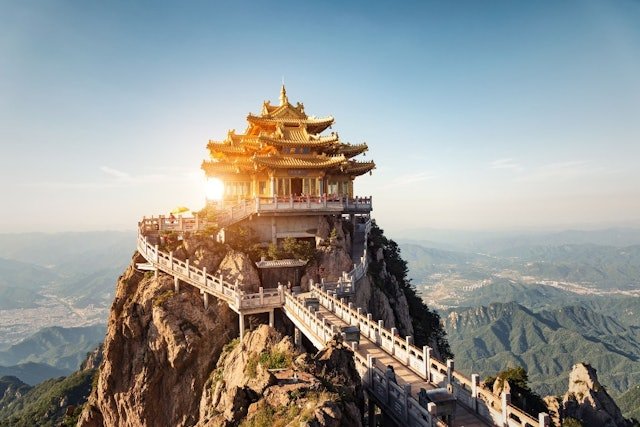Located in Luoyang, Henan Province, Mount Laojun boasts magnificent scenery and a mystical atmosphere, making it a sacred site of Taoism. It is renowned as the “Peerless Sanctuary under Heaven, the World’s Number One Immortal Mountain,” with a history spanning over 2,000 years. However, Mount Laojun was originally a scenic area not open to foreigners. What secrets does it hold?
Mount Laojun, formerly known as “Mount Jingshi,” is situated in Luanchuan County, Henan Province. Its name, “Jingshi,” signifies gathering the beautiful scenery of the eight-hundred-li (about 400 kilometers) Funiu Mountain Range into one place.
As one of the core scenic areas of the Funiu Mountain National Geopark, Mount Laojun preserves traces of geological evolution from 1.9 billion years ago. It features unique “slippery peak forests” and thousands of acres of stone forests, abundant vegetation, and mist-shrouded clouds, justifying its reputation as an “Immortal Mountain.”

The Luoyang Mount Laojun Scenic Area boasts 179 attractions, with the Golden Summit Taoist Temple Group being the most famous. In winter, Mount Laojun is adorned in silver, while the Golden Summit Taoist Temple resembles a jade palace, exuding a mystical aura.
Beyond its natural beauty, Mount Laojun is a renowned Taoist mountain in China with a history of over 2,000 years. Legend has it that during the Eastern Zhou Dynasty, Li Er, the founder of Taoism, practiced here and was revered as “Supreme Laojun.” During the Northern Wei Dynasty, a temple dedicated to Laojun was built on the mountain, which suffered damage and reconstruction throughout history. During the Tang Dynasty, Emperor Taizong of Tang renovated the temple and bestowed upon it a plaque inscribed with “Famous Mountain Under Heaven” in his own calligraphy.
Today, the Golden Summit Taoist Temple Group, including over ten buildings such as Mount Laojun, represents the architecture of Taoism on Mount Laojun, adopting the architectural style of Ming and Qing royal palaces. Among them, the Golden Hall, Bright Treasure Terrace, and Jade Emperor Peak have golden roofs, shining brightly amidst the sea of clouds and rosy clouds, resembling a fairyland and becoming a must-visit destination for tourists.

However, despite its status as a Taoist sacred mountain, Mount Laojun is one of the several scenic areas in China not open to foreigners. What could be the reason for this?
Speculations suggest that Luanchuan County, where Mount Laojun is located, has many military bases nearby, and for security reasons, foreigners are prohibited from entering. Another theory posits that Mount Laojun is a national-level nature reserve and a genetic bank of Chinese herbal medicine, hence not open to foreigners. However, these are just rumors and have never been officially confirmed, adding a touch of mystery to Mount Laojun.
